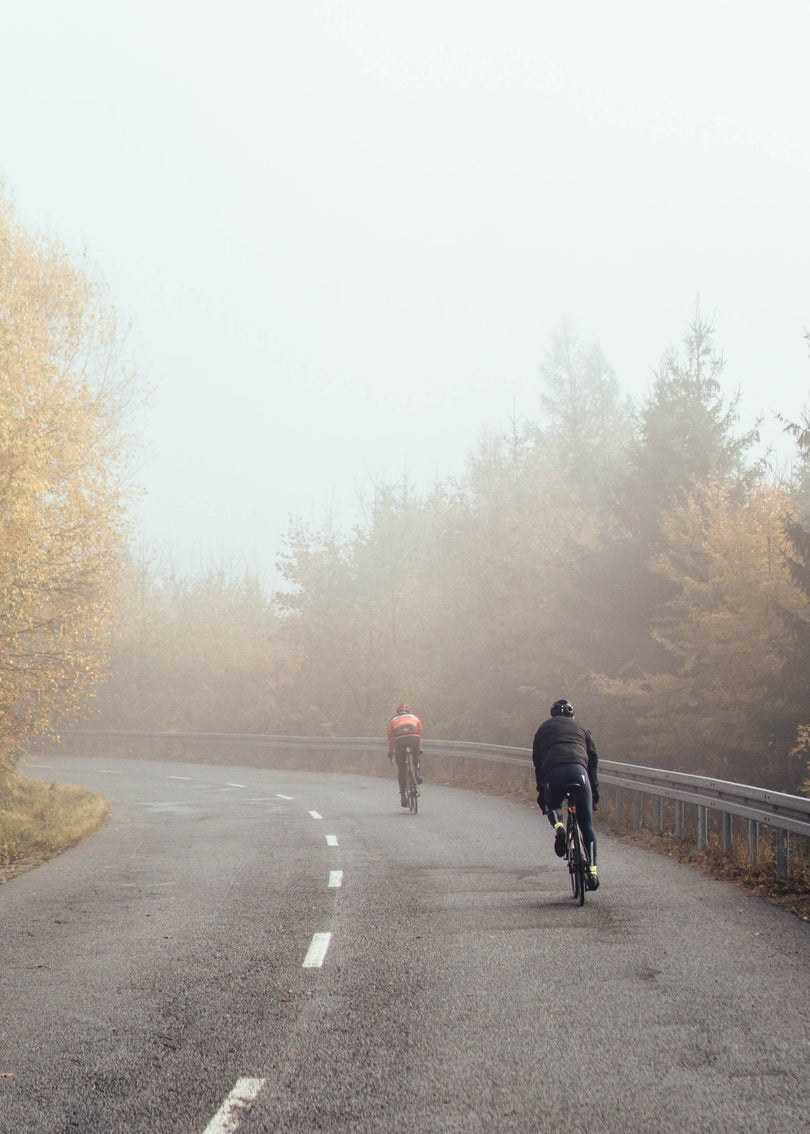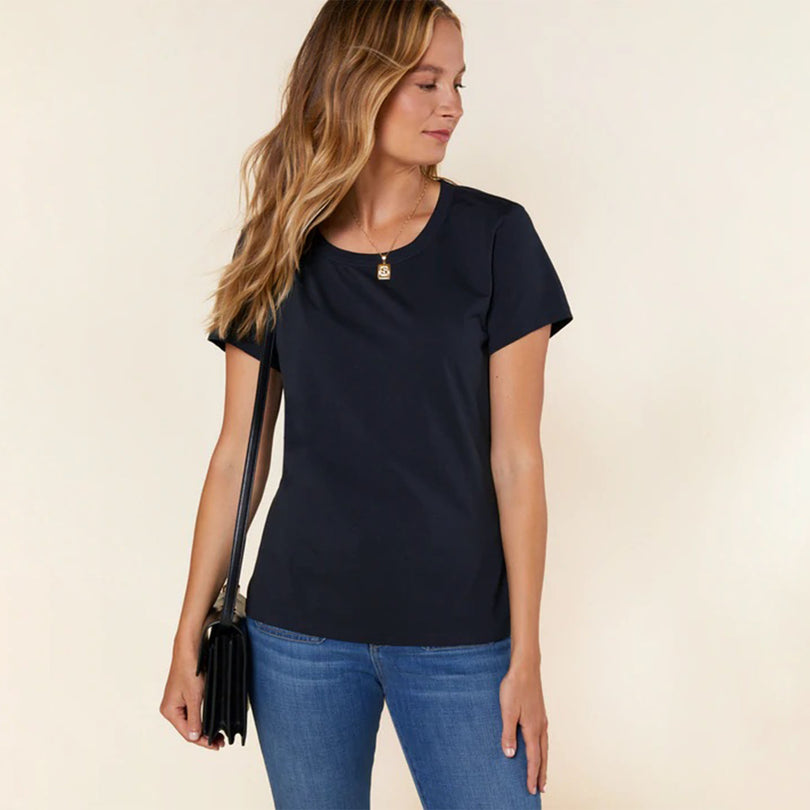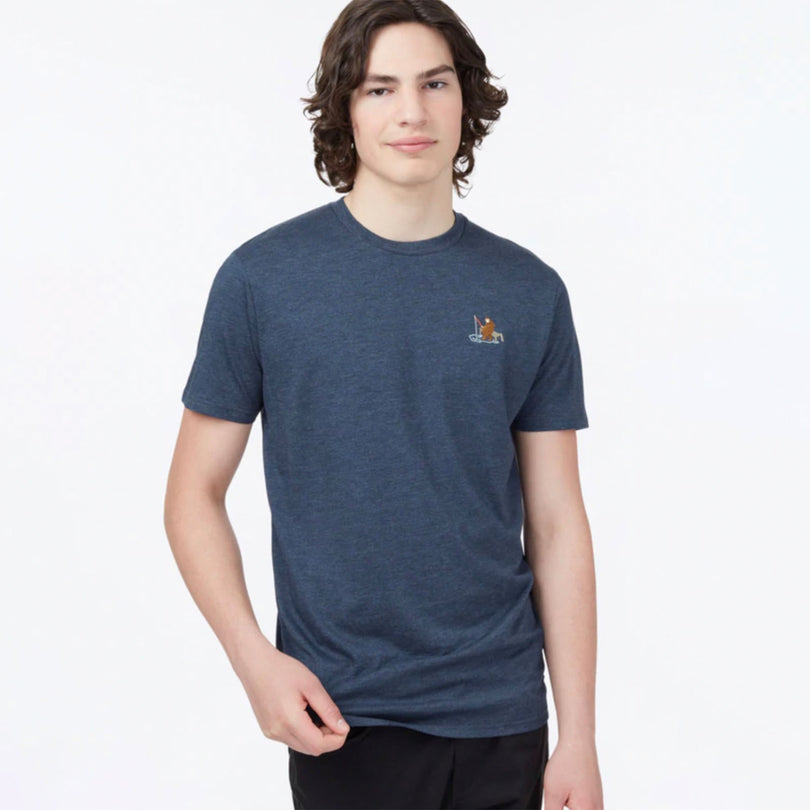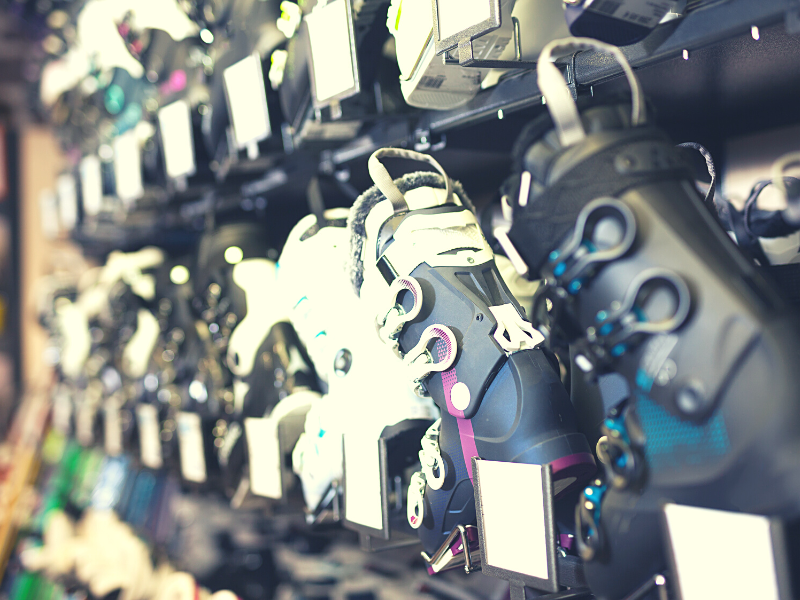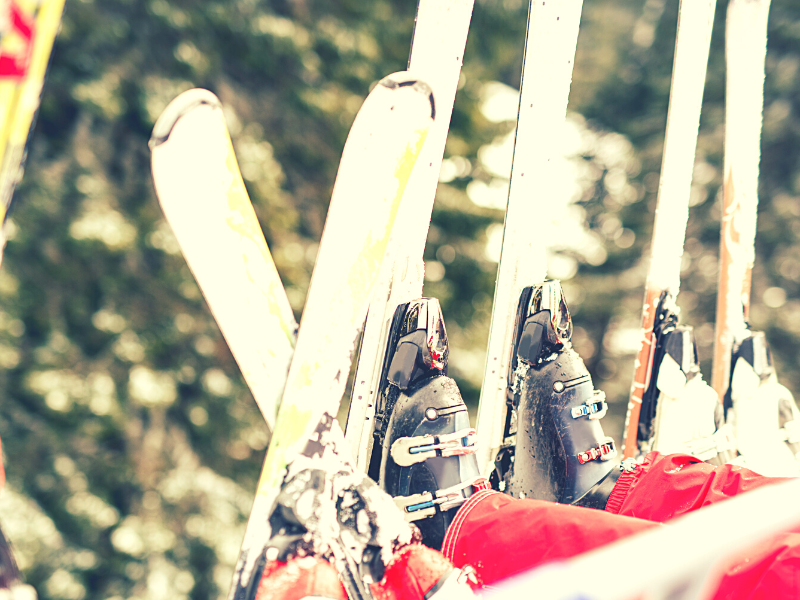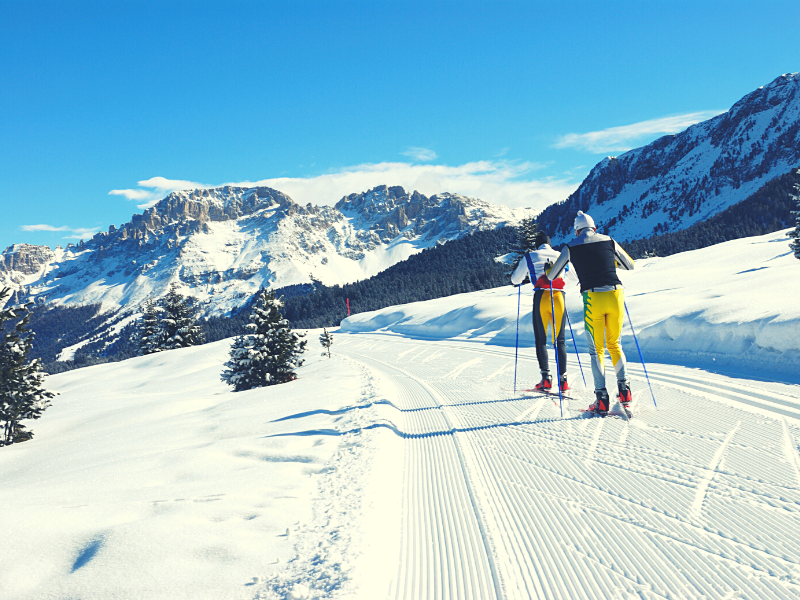You were happy with how your ski boots fit when you tried them on at the store, but now that you’re trying them on again before the big ski trip, they feel far tighter than at the store. Naturally, you're worried they're too tight and you're wondering, "How tight are ski boots supposed to be?"
Ski boots should fit snugly enough on your feet that they stay secure when you move, but not so tight that they cause you pain. Your heel should touch the back of the boot and your toes should touch the front of the boot. If you can wiggle your toes to some degree, then the boots fit properly.
While your initial question is probably answered, you probably have many more. After all, there may still be time to exchange or get a refund if your boots fit improperly. So let's answer some of the key questions to help you figure out if your boots fit correctly, and how to get a perfect size.
Check out Kenver's extensive selection of ski boots here:
Kenver's Ski Boot Collection
Signs Your Ski Boots Fit Correctly
For the perfect fit, you have to do a delicate dance between tight and loose; because you do want a snug fit for ski boots, just not snug to the point where it starts to become painful. It’s a fine line for sure, so here are two key indicators that your boots fit just right:
1. Your Toes Connect with the Front of the Boot
When you insert your foot into the shell of a ski boot, your heel should be positioned in the back. If you can feel the front of the boot with your toes when your heel is set way back, then your boots are the perfect fit.
2. You Have Room to Wiggle Your Toes
Another indicator that your ski boots are just snug enough is the freedom to move your toes.
While your toes most likely won't splay apart in a pair of ski boots, they should be able to wiggle and bend, at least a little bit.
How Do You Know If Your Ski Boots Are Too Tight?
The two most common questions people ask about proper ski boot fits, revolve around pain and tightness. And really, they are the same.
It makes sense that both would be the most common question for ski boot fit when you take into account that most skiers err on the side of going tighter with the fit, rather than looser when purchasing new ski boots.
The bad news for most skiers though is that a tight boot isn't much better than a loose boot.
Signs Your Ski Boots Are Too Tight
So how do you tell if they're too tight then? It's simple - to rehash an earlier thought, pain and tightness are the same when it comes to ski boots.
The biggest giveaway that your boots are too tight is if they cause you pain even when you aren't on the slopes. Simply standing around in them, not even walking or actively skiing, then that’s a clear sign the boots are too tight.
Additionally, if your toes have no wiggle room literally or figuratively, then the boots you’ve purchased don’t fit.
Why Ski Boots Shouldn’t Be Too Tight
Wearing very tight ski boots isn't simply uncomfortable, it's also dangerous. The pain you feel can, at the very least, make your day miserable. You won’t want to walk around the ski resort or traverse the slopes because you’re in so much pain with every step you take.
But your feet can also go numb as you lose circulation. More so than that, the lack of circulation can increase how cold your feet feel even if you’re wearing thick socks and burly ski boots.
Perhaps the most important consequence of tight ski boots is how numb feet impair your agility on the slopes, putting you at higher risk of tripping, falling, and hurting yourself.
How Do You Know If Your Ski Boots Are Too Loose?
If you suspect your boots are too loose, which is just as hazardous as tight ski boots, you may still feel pain but the type of pain will mostly be friction-based, such as blisters.
Here are three clear indicators that your boots are too big, or too loose, and need to be adjusted or downsized:
- The back of your heel doesn't touch the inside of your ski boot
- Your toe won't touch the front of the ski boot
- The sole of your ski boot is longer than your foot
Let's have a closer look at all three signs that your ski boots are too big or too loose for your feet.
1. Your Heel Doesn’t Touch the Back of the Boot
If your heel won't reach the back of the boot, or it touches but doesn’t stay there consistently, that’s a sign you’re swimming in your ski boots. Your heel is supposed to stay firmly in the back of the boot for a consistent fit.
2. Or Your Toes Don’t Touch the Front
Continuing from the previous indicator, your heel touching the back of the boot isn't enough - at the same time, your toes need to also be able to touch the front of the boot. This simultaneous interaction keeps your foot firmly planted in the ski boot.
So, if only your heel fits in the back or only your toes touch the front, but both don’t happen at the same time, that’s another can’t-miss sign that your ski boots are in desperate need of resizing, or that they don't fit altogether.
3. The Sole Is Longer Than Your Foot
Sometimes the sole of your ski boot might outsize the length of your foot. The most common culprit of this indicator is buying on sight alone - that is, getting your ski boots without trying them on first.
This kind of situation usually crops up more when shopping for ski boots online and especially when buying boots when you’re not quite sure of your size. It's rare that anyone would go into a ski shop physically and buy ski boots without trying them on first.
Why Ski Boots Shouldn’t Be Too Loose
Your ski boots need a firm fit so that when you flex your ankles and knees, the energy transference can easily reach your boots. That’s what makes skiing feel seamless and even easy for more experienced skiers.
When your boots are too loose, that energy transference gets disrupted, which can make skiing more difficult than it needs to be.
There’s more to it than even that, though. You’ll feel your feet move in your boots either backward or forward when skiing. This can make you feel unsteady, and you might stumble or fall.
A loose ski boot can also make your heel lift from the insole - this can happen when skiing or even just walking in your ski boots. It's not a huge deal when walking, but it can be unsettling if you're actively skiing.
Performance aside, loose boots increase your risk of injury. On the minor scale, that's painful blisters on your feet. On the major scale, that's a fall with a serious injury to boot (pun intended.)
Now, you should definitely note that ski boots will naturally loosen with time. This is usually a result of breaking the boots in, as they’ll conform to the shape of your foot. Luckily, ski boots are adjustable. Tinkering with yours should eliminate any excess looseness in the boots.
Is It Better to Size Up or Down in Ski Boots?
For new skiers, it's recommended to go a size up in ski boots, whereas experienced skiers have more leeway to go with a tighter ski boots. The extra space in your ski boots as a beginner gives you the chance to learn how to ski without having to worry about your feet being too cramped inside the boots.
If you’re on the precipice of purchasing new ski boots, but you're stuck between sizes, there isn't quite a cut-and-dried answer like you'd hope or expect.
While all ski boots should be relatively tight, the tightest boots are ideal for more experienced skiers. The boots still aren’t supposed to hurt, but they should be considerably tighter than a pair of beginner’s ski boots.
Keeping that in mind, those who are just getting into the exciting sport of skiing for the first time need a moderately looser fit and should size up.
For experienced skiers, the ski boot is part of the performance - they know what to expect and how to get the most out of their gear. However, for a newcomer, comfort is a top priority for you as you adjust to the slopes. And your boot is more about function than it is performance.
As you gain experience and eventually outgrow your beginner’s boots, the next pair you buy should be tighter than the first.
We want to stress again that if you decide to size down, the fit of your ski boots should never be painful. If your boots hurt to wear, then return to the prior size you were wearing.
Finding The Perfect Ski Boot Fit
Unlike buying a pair of shoes where you can simply put them on and walk around the store for a bit, it's not that easy with ski boots. What's more, buying appropriately-sized ski boots is integral to a comfortable fit and enhanced performance.
It's difficult to figure out that balance between loose and tight, and even more of a challenge for beginners. Just remember, your ski boots shouldn’t be so tight that they cause you pain nor should they be so loose that you’re stumbling and swimming in them.
Now that you know how to size your ski boots, you have one less thing to worry about on the slopes.
Check out Kenver's extensive selection of ski boots here:
Kenver's Ski Boot Collection

